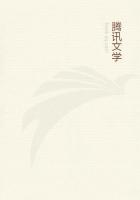Among the many counts in which women have been proven inferior to men in human development is the oft-heard charge that there are no great women artists. Where one or two are proudly exhibited in evidence, they are either pooh-poohed as not very great, or held to be the trifling exceptions which do but prove the rule.
Defenders of women generally make the mistake of over-estimating their performances, instead of accepting, and explaining, the visible facts.
What are the facts as to the relation of men and women to art? And what, in especial, has been the effect upon art of a solely masculine expression?
When we look for the beginnings of art, we find ourselves in a period of crude decoration of the person and of personal belongings. Tattooing, for instance, is an early form of decorative art, still in practice among certain classes, even in advanced people. Most boys, if they are in contact with this early art, admire it, and wish to adorn themselves therewith; some do so--to later mortification. Early personal decoration consisted largely in direct mutilation of the body, and the hanging upon it, or fastening to it, of decorative objects. This we see among savages still, in its gross and primitive forms monopolized by men, then shared by women, and, in our time, left almost wholly to them.
In personal decoration today, women are still near the savage. The "artists" developed in this field of art are the tonsorial, the sartorial, and all those specialized adorners of the body commonly known as "beauty doctors."
Here, as in other cases, the greatest artists are men. The greatest milliners, the greatest dressmakers and tailors, the greatest hairdressers, and the masters and designers in all our decorative toilettes and accessories, are men. Women, in this as in so many other lines, consume rather than produce. They carry the major part of personal decoration today; but the decorator is the man. In the decoration of objects, woman, as the originator of primitive industry, originated also the primitive arts; and in the pottery, basketry, leatherwork, needlework, weaving, with all beadwork, dyeing and embroideries of ancient peoples we see the work of the woman decorator.
Much of this is strong and beautiful, but its time is long past. The art which is part of industry, natural, ******, spontaneous, ****** beauty in every object of use, adding pleasure to labor and to life, is not Art with a large A, the Art which requires Artists, among whom are so few women of note.
Art as a profession, and the Artist as a professional, came later; and by that time women had left the ******* and power of the matriarchate and become slaves in varying degree. The women who were idle pets in harems, or the women who worked hard as servants, were alike cut off from the joy of ****** things. Where constructive work remained to them, art remained, in its early decorative form. Men, in the proprietary family, restricting the natural industry of women to personal service, cut off their art with their industry, and by so much impoverished the world.
There is no more conspicuously pathetic proof of the aborted development of women than this commonplace--their lack of a civilized art sense.
Not only in the childish and savage display upon their bodies, but in the pitiful products they hang upon the walls of the home, is seen the arrest in normal growth.
After ages of culture, in which men have developed Architecture, Sculpture, Painting, Music and the Drama, we find women in their primitive environment ****** flowers of wax, and hair, and worsted; doing mottoes of perforated cardboard, ****** crazy quilts and mats and "tidies"--as if they lived in a long past age, or belonged to a lower race.
This, as part of the general injury to women dating from the beginning of our androcentric culture, reacts heavily upon the world at large.
Men, specializing, giving their lives to the continuous pursuit of one line of service, have lifted our standard in aesthetic culture, as they have in other matters; but by refusing the same growth to women, they have not only weakened and reduced the output, but ruined the market as it were, hopelessly and permanently kept down the level of taste.
Among the many sides of this great question, some so terrible, some so pathetic, some so utterly absurd, this particular phase of life is especially easy to study and understand, and has its own elements of amusement. Men, holding women at the level of domestic service, going on themselves to lonely heights of achievement, have found their efforts hampered and their attainments rendered barren and unsatisfactory by the amazing indifference of the world at large. As the world at large consists half of women, and wholly of their children, it would seem patent to the meanest understanding that the women must be allowed to rise in order to lift the world. But such has not been the method--heretofore.
We have spoken so far in this chapter of the effect of men on art through their interference with the art of women. There are other sides to the question. Let us consider once more the essential characteristics of maleness, and see how they have affected art, keeping always in mind the triune distinction between masculine, feminine and human. Perhaps we shall best see this difference by considering what the development of art might have been on purely human terms.















